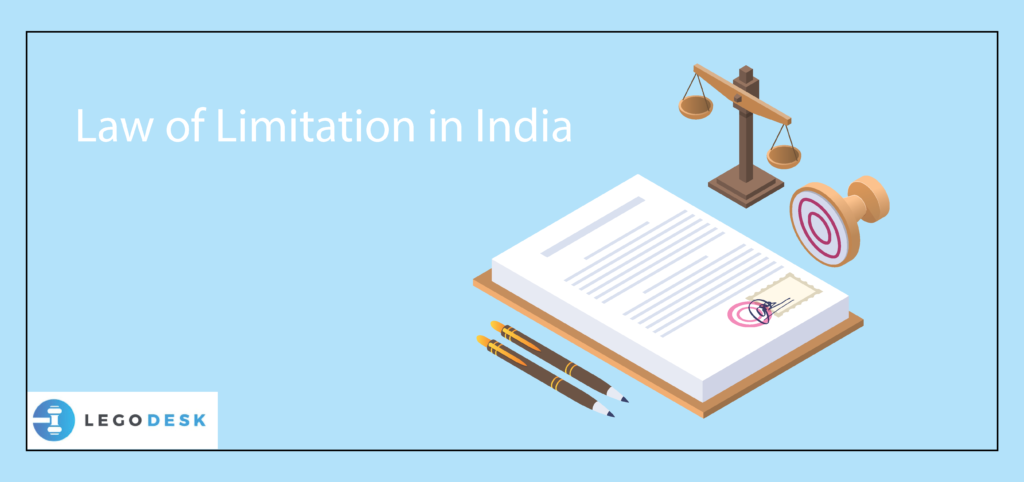All About Law of Limitation in India
Introduction To Law of Limitation In India
As the name suggests, ‘Law of Limitation’ puts a time limit on the filing of a suit, appeal or application. Basically, it is a time limit for an aggrieved person to approach the court for Justice. However, if a party files a suit after the expiration of the time limit, the suit will be struck by the Law of Limitation. Section 2(j) of the Act defines ‘period of limitation’ as the prescribed period for any suit, appeal or application by schedule. Also, ‘prescribed period’ means the period of limitation computed in accordance with the provision of the Act.
First time Law of Limitation was introduced in the Limitation Act, 1859. Subsequently, in 1963; Limitation Act, 1963 amended the earlier act. Its purpose was to consolidate and amend the provision regarding limitation on the suit and legal proceedings.
Section 3: Bar of Limitation
Section 3 of the Act puts a time limitation on the filing of a suit, appeal or application. Various subsection enumerates the condition in which section 3 operates, which are as follows;
- Section 3(1) is negative in approach. Whereas it lays down the exception to section 3, it also debars the filing of a suit, appeal or application beyond the prescribed period. Subsection 1, in short, covers every kind of suit except which are expressly declared under section 4 to section 24 of the act. The last part of this subsection “although limitation has not been set up as a defense’ is of most important. It states that even when a party does not raise the defense of limitation, the suit will automatically attract the provision of this act.
- Section 3(2)(a) of the act provides for the time when various suits are instituted. Different scenarios are given in which the institution of a suit is discussed. Such as, in an ordinary case, on the date when the complainant presents the application before the proper officer.
- Section 3(2)(b) talks about the claim by way of set-off or counterclaim. The date of the institution of the suit the date on which such claim comes before the court
Doctrine of Limitation
The main objective of the enactment is to give effect to ‘interest republican ut sit finis litium’. According to the maxim, it is in the interest of the state to finish litigation. There are two major broad considerations working behind the Doctrine of Limitation which are:
- That, the rights which are not exercised for a long time are said to be as non-existent.
- That, the rights which are related to property and rights which are in general should not be in a state of constant uncertainty, doubt and suspense.
The intention of the legislature behind accepting the concept is very simple. ” Controversies are restricted to a fixed period of time, lest they should become immortal while men are mortal.”
The Exception to the Rule
Section 5: Extension of Prescribed Period in Certain Cases
Section 5 of the Indian Limitation Act, enables the party to raise appeal after the expiration of the period. For example, if a party fails to file an appeal before the superior court within the time as originally fixed, the party still can move the court. Which means the party can move an application to the court under Section 5 of the act. However, to move an application under this section, the party has to show the ‘Sufficient Cause’ for non-filing of the application within the fixed time. The Ground for sufficient cause is the facts and circumstances of each case. It is the discretion of the court to accept or reject the application moved under this section.
The extent of section 5
While Section 5 of the act provides a back door entry to file an appeal, but the limit and extent of this section are not infinite. There are only certain types of matter which can attract this section;
- It is only applicable to the situation where the suit is already filed and pending before the court. Accordingly, if a party does not file suit within the fixed time, the party cannot move an application under this section. The pendency of suit includes appeal and application.
- Likewise, this provision is applicable only on the suits which are exclusively pending before the Court. And, it is not applicable to the proceedings of Tribunals.
- Also, section 5 is not applicable if the party fails to file the execution petition within the time limit after passing of the decree and order.
Conclusion
The main objective of the Act is to put a bar on litigation. In the absence of such legislation, the adjournment of any suit will become impossible. And in such circumstances, the court will become meaningless. It is an integral part of Indian Legislation. However, in certain circumstances parties are unable to file an appeal before the court. It can be due to any personal, financial or health-related reasons. For aiding such bona fide issues, the Act provides the necessary provision in part II of the Act. And, the discretion is left with the courts to decide on the merits of the case.
Try our Debt Resolution solutions today Request a Demo
